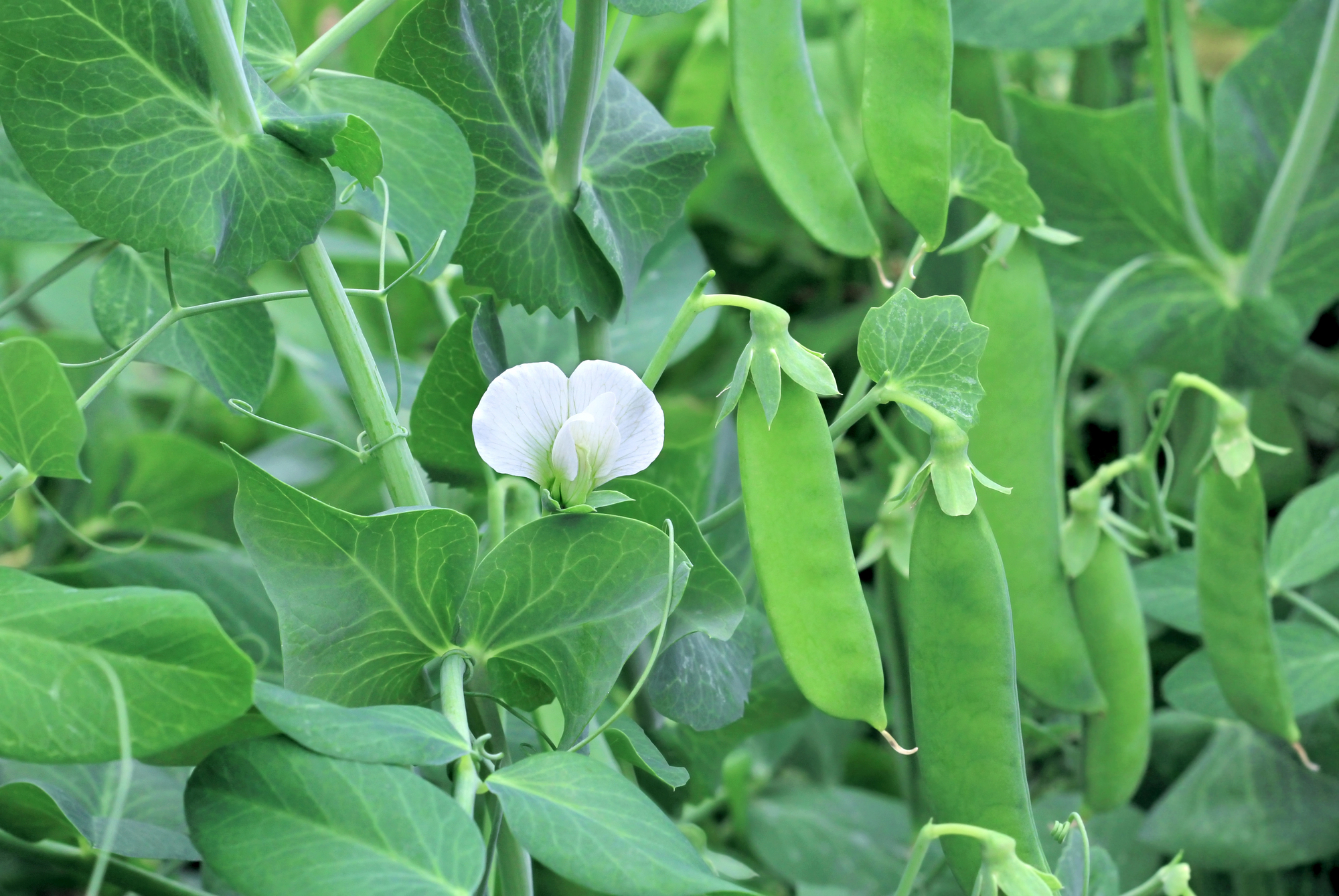Pea Donation Tracker
Quick Links: How & Where to Grow | Temperature | How to Care For | Harvest Signs | Harvesting | Support | Pests | Companions | Varieties | Preservation | Recipes | Michigan Tips | Fun Facts
🌱 How & Where to Grow Peas:
- Plant as early as soil can be worked (March 20+ in SE Michigan) – peas love cool weather!
- Direct seed only – peas don’t transplant well due to their delicate root system.
- Plant seeds 1-2 inches deep, 2 inches apart in double rows 6 inches apart.
- Space double rows 2-3 feet apart with support structure in between.
- Sunlight: Full sun (6-8 hours) preferred, tolerates partial shade.
- Soil Type: Well-drained soil with pH 6.0-7.5.
- Soil Amendment: Light compost only – peas fix their own nitrogen!
Pro tip: Inoculate seeds with rhizobia bacteria for better nitrogen fixation and 50% higher yields!
🌡️ Temperature Guidance:
Minimum 40°F soil. Optimal 45-60°F. Bolt above 85°F.
- Planting: Seeds germinate at soil temperatures as low as 40°F.
- Optimal growth: 55-70°F air temperature.
- Peas can tolerate light frosts and even snow after emergence.
- Production stops when temperatures exceed 80°F.
- Plant fall crops 8-10 weeks before first frost for second harvest.
Michigan’s cool springs are perfect for peas – they’re often the first crop planted!
💧 How to Care for:
- Consistent Moisture: Critical during flowering and pod development.
- Watering: 1 inch weekly – avoid overhead watering to prevent disease.
- Mulch: Apply 2 inches after plants are 4 inches tall to keep roots cool.
- Fertilizer: Usually unnecessary – peas fix nitrogen from the air.
- Weeding: Keep weed-free when young – mature peas shade out weeds.
📏 Harvest Signs:
Garden peas when plump. Snap when full-sized. Snow when flat.
- Garden (shelling) peas: Pods bright green and plump, peas visible through pod.
- Snap peas: Pods fully developed but still crisp and sweet.
- Snow peas: Pods flat with tiny peas just beginning to form.
- Check daily once flowering begins – peas mature quickly!
- Lower pods mature first – harvest from bottom up.
Morning harvest provides the sweetest peas with highest sugar content!
🧺 Harvesting:
Use both hands – one to hold stem, one to pick. Harvest every 2-3 days for continuous production.
- Pick carefully to avoid damaging delicate vines.
- Regular harvesting encourages more pod production.
- Harvest in morning when pods are crisp and sugar content highest.
- Use immediately or cool quickly – peas lose sweetness rapidly.
- Don’t pull vines when done – cut at soil level to leave nitrogen-fixing roots.
🪜 Support:
Bush varieties: 2-3 feet tall, minimal support. Climbing varieties: 4-6 feet, need strong support.
- Install supports at planting time – adding later damages roots.
- Options: Bamboo teepees, wire mesh, wooden trellises, or string supports.
- Pea tendrils naturally grasp supports – no tying needed.
- Double rows can support each other with netting between.
- Bush types benefit from short twiggy branches for support.
🪲 Michigan Pests:
Pea aphids, pea weevil, cutworms, powdery mildew.
- Pea aphids: Small green insects on growing tips – blast off with water.
- Pea weevil: Notches in leaves – rarely serious, plants outgrow damage.
- Cutworms: Cut seedlings at soil level – use collar barriers.
- Powdery mildew: White coating on leaves late season – choose resistant varieties.
- Root rot: In wet soils – ensure good drainage.
🫱🏽🫲🏼 Companions:
Good with carrots, radishes, lettuce, spinach.
- Avoid onions, potatoes.
- Peas fix nitrogen that benefits following crops.
- Radishes mark pea rows and mature before peas need space.
- Lettuce and spinach grow well in peas’ partial shade.
- Carrots can be planted between pea rows.
- Avoid alliums (onions, garlic) which inhibit growth.
🌿 Varieties:
Spring: ‘Alaska’, ‘Green Arrow’. Snap: ‘Sugar Ann’. Snow: ‘Oregon Giant’.
- ‘Alaska’: 55 days, earliest variety, 2 feet tall, smooth seeds for cold soil.
- ‘Green Arrow’: 68 days, heavy yields, 28 inches tall, long pods.
- ‘Sugar Ann’: 52 days, early snap pea, 2 feet tall, AAS winner.
- ‘Sugar Snap’: 70 days, original snap pea, 6 feet tall, very sweet.
- ‘Oregon Giant’: 70 days, huge snow pea pods, disease resistant.
🫙 Preservation:
Freeze blanched 1.5-2 minutes. Dry for split peas. Pressure can.
- Freezing: Shell, blanch 1.5-2 minutes, cool quickly, freeze in portions.
- Fresh storage: Keep pods in perforated bags 3-5 days maximum.
- Drying: Let pods mature and dry on vine for soup peas.
- Pressure canning: Only safe method – never water bath can.
- Snow/snap peas: Freeze whole after blanching 2-3 minutes.
🧑🏽🍳 Recipes:
Fresh pea salad, pea soup, stir-fried snow peas, pea shoots.
- Fresh peas with mint and butter – classic spring side dish.
- Pea shoot salad – harvest growing tips for gourmet greens.
- Sugar snap pea stir-fry with garlic and ginger.
- Traditional split pea soup from dried peas.
- Pea hummus – bright green spring alternative!
✋🏼 Michigan Tips:
- Plant St. Patrick’s Day weekend if soil isn’t frozen.
- Use row covers for earliest plantings.
- Fall peas often have fewer pest problems.
- Plant every 2 weeks through April for extended harvest.
- Michigan’s cool, wet springs perfect for peas.
- Second crop in August extends season into fall.
🧠 Fun Facts:
- Mendel used peas for his groundbreaking genetics experiments.
- Thomas Jefferson grew 30+ pea varieties at Monticello.
- Peas add 20-25 pounds of nitrogen per acre to soil.
- Fresh peas have been found in Egyptian tombs.
- Only 5% of peas grown are sold fresh – 95% are frozen or canned.
- Canada is the world’s largest producer of peas.
- Peas have more protein per serving than a tablespoon of peanut butter!
- The record for eating peas is 7,175 peas one by one in 60 minutes using chopsticks


0 Comments